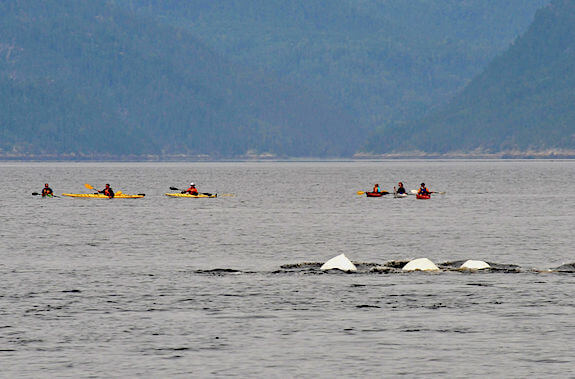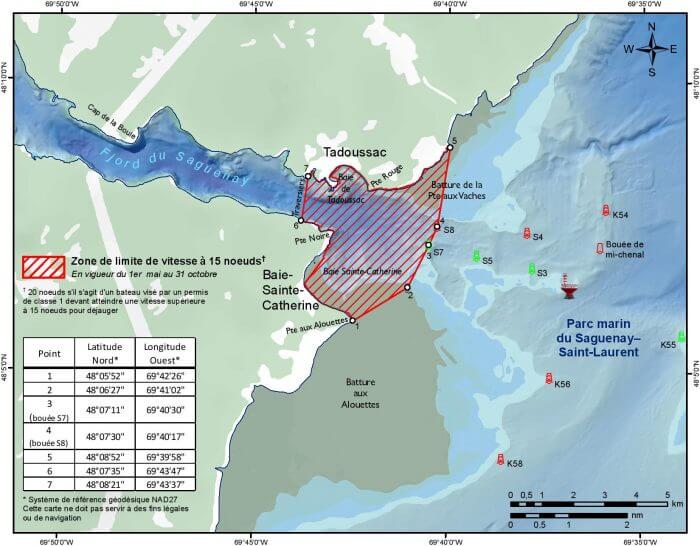Reduced speed for all boats in certain areas, prohibition of certain activities, clarification of the definition of disturbance to marine mammals… These are just a few of the amendments made to the Marine Activities in the Saguenay-St. Lawrence Marine Park Regulations since January 1, 2017. The goal: to better protect marine mammals, especially species at risk such as blue whales and belugas.
The first draft of the Regulations, adopted in 2002, was updated following extensive consultations with representatives of First Nation communities, municipalities, regional organizations and research groups. Changes affect all users of the Marine Park (recreational boaters, tour companies, research groups, etc.). Here is a summary.
Changes affecting the general public
· At the mouth of the Saguenay River, all boats must reduce their speed to 15 knots (previously 25 knots).
· Personal watercraft, hovercraft and towed water sports (water skiing, wakeboarding, tubing) are prohibited within park boundaries. Changes of speed and zigzagging cause too high a risk of collision for marine mammals, particularly belugas and their calves.
· Park management may close access to certain areas during specific time periods. Before visiting the Marine Park, it is best to check if warnings have been posted on the latter’s website.
· The operator of a vessel, notwithstanding human-powered craft such as canoes or kayaks, shall not remain stationary and shall navigate at a constant speed of not less than 5 knots and not more than 10 knots if they are less than one-half nautical mile (926 m) from a beluga. The purpose of this measure is to avoid disturbing belugas in their vital activities (feeding, resting, raising young, calving, etc.)
· It is forbidden to enter the water to swim or interact in any ways with marine mammals.
If you go on a cruise
In order to reduce the impact on cetaceans during organized observation activities, a few changes have been introduced. Tour boat captains and sea kayak guides are now required to complete a mandatory course and pass an annual test on the Regulations in order to be certified to operate in the park. In order to reduce stress on marine mammals, the number of offshore tour vessels that may be present in an observation zone has been limited to ten. If the ship captain or kayak guide gives you an instruction, obey it. Their guidelines are aimed at protecting the whales.
Reminder
· A distance of at least 400 m must be maintained at all times with species at risk (belugas and blue whales) and at least 200 m with other cetaceans.
· It is forbidden to fly drones over the Marine Park.
· It is forbidden to touch or feed a marine mammal.
· Any collision with a marine mammal should be reported to 1-866 509-9888.
Compliance with the Regulations helps protect the marine mammals that frequent the Saguenay Fjord and the St. Lawrence River. Each and every park user can therefore play an important role in the conservation of these species.






